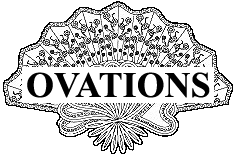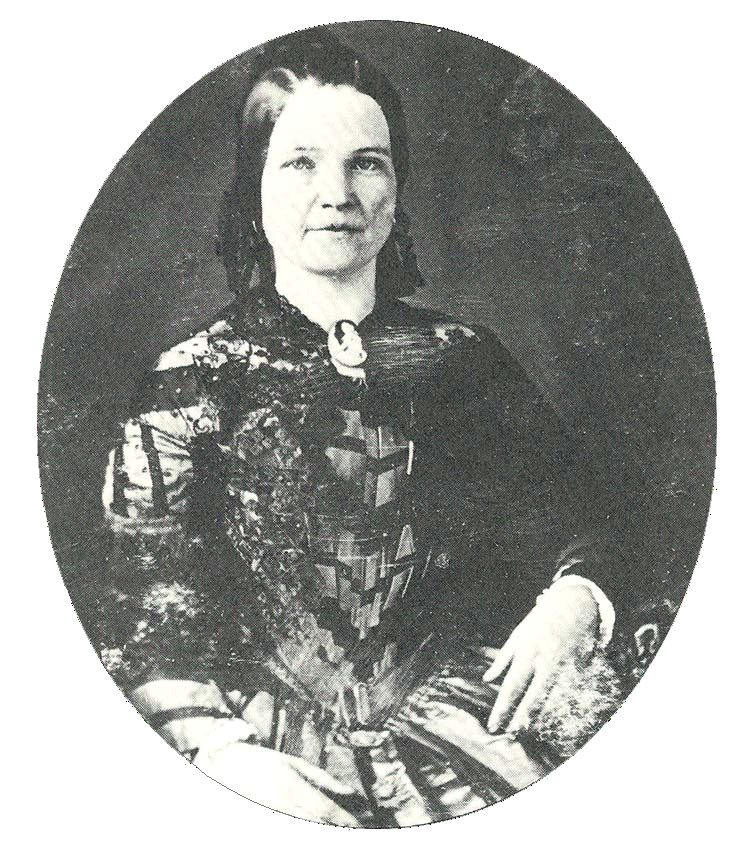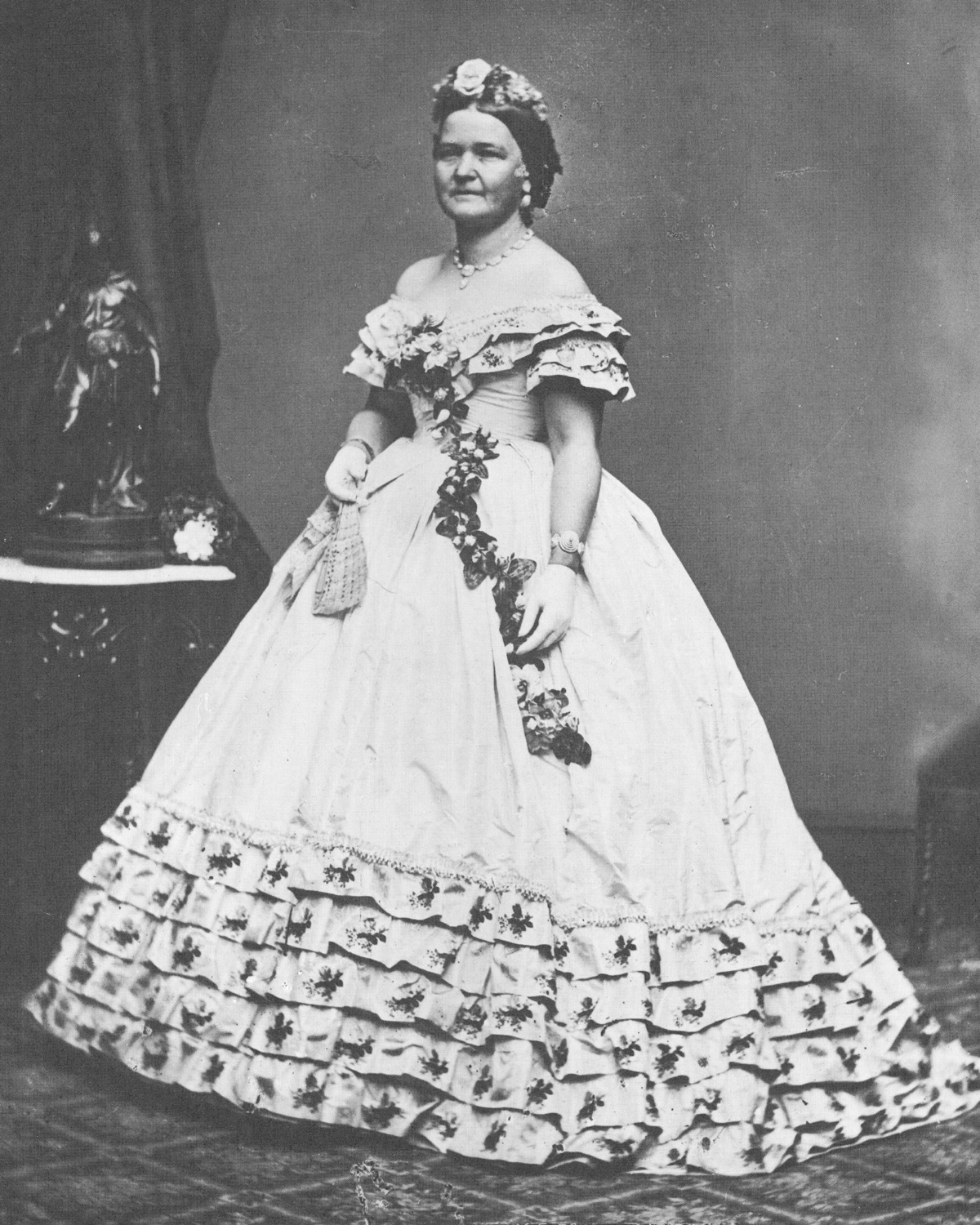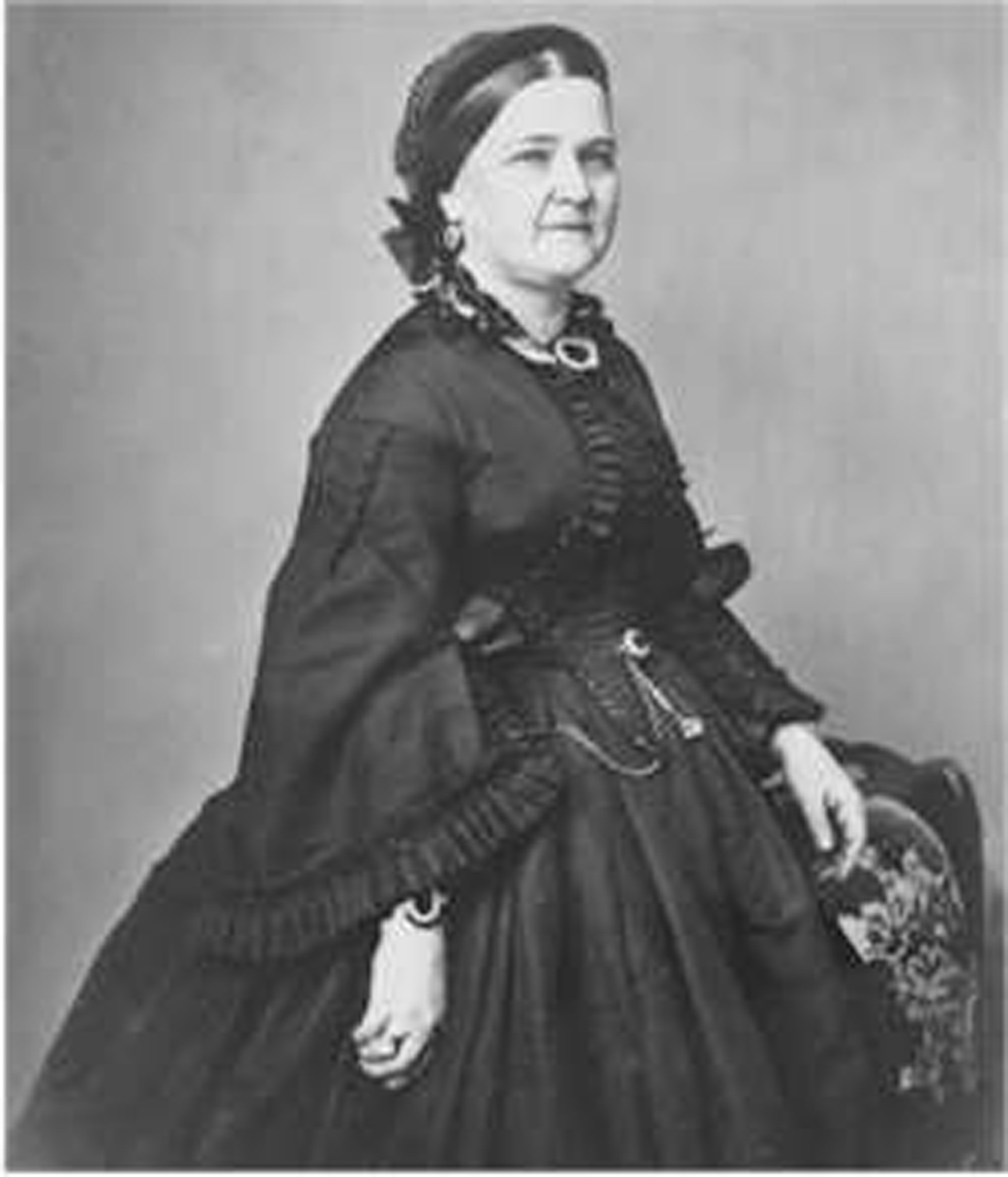



|
 Mary
Todd was born to a prominent family in Lexington, Kentucky. Having lost
her mother when she was six and never fond of her stern step-mother,
Mary gravitated toward her father and his friends. Impatient with the
mindless busywork expected of the fairer sex, she spent hours listening
to the men who frequented the Todd dinner table - senators, governors,
congressmen - men like John C. Calhoun, Henry Clay, Cassius M. Clay, and
John J. Crittenden - and analyzing their take on current affairs. Thus
was born her political acumen, a rare commodity in women that was
discouraged by their mothers because it would discourage suitors. Mary
Todd was born to a prominent family in Lexington, Kentucky. Having lost
her mother when she was six and never fond of her stern step-mother,
Mary gravitated toward her father and his friends. Impatient with the
mindless busywork expected of the fairer sex, she spent hours listening
to the men who frequented the Todd dinner table - senators, governors,
congressmen - men like John C. Calhoun, Henry Clay, Cassius M. Clay, and
John J. Crittenden - and analyzing their take on current affairs. Thus
was born her political acumen, a rare commodity in women that was
discouraged by their mothers because it would discourage suitors.
Mary was a quick and perceptive student, acing her studies with ease and
devouring everything assigned to her. And her schooling did not
specialize in domestic ornamentation. Her father, Robert Smith Todd,
stood virtually alone in his conviction in the ďnecessity of affording
our daughters as well as our sons the means of acquiring a substantial
as well as ornamental education.Ē So Mary received schooling that
balanced the advancement of the mind - science, philosophy, French and
Greek - with traditional domestic pursuits - household management, fine
needlework, cultured refinement and etiquette.
Known for her intelligence, wit, and social graces, she was courted by
two men who ultimately became competing presidential candidates -
Stephen A. Douglas, the Little Giant whose personal elegance was as
urbane as his nationally noted eloquence, and Abraham Lincoln, the
gangly, circuit-riding country lawyer as polished as a barn board.
Seeing his brilliance as one who spies a diamond in the rough, and very
much against her familyís wishes, Mary chose to marry Lincoln.
Relying on her classical education and political associations through
the Todd family, Mary patiently groomed Mr. Lincoln in the social graces
and educated him politically. In so doing, she realized her dream of
becoming the First Lady.
Such a dream undoubtedly sustained Mary through much personal strife. As
a girl, she had predicted with outspoken determination that the man she
married would become President. Mr. Lincoln did not appear to be much of
a catalyst toward that dream. Their domestic life carried the usual
amount of financial struggle and personal loss, as Lincoln struggled to
support a growing family. Robert, the first-born, took after his mother
in temperament. With Lincoln on the road for six months at a time during
those early years, the boy never had the chance to grow close to his
father. The loss before age four of their second son Eddie left the
family bereft, and only the birth within the year of their third son,
Willie, began to heal that devastating wound. Their fourth child Thomas
- affectionately called Tad - brought a vitality into the household, and
he and Willie became fast friends and fun-loving playmates. Lincolnís
professional career prospered, and his political interests blossomed.
The Lincolns came to enjoy relative familial and economic stability.
 The
brooding storm of Civil War, however, left nothing untouched. The
brooding storm of Civil War, however, left nothing untouched.
Upon her husbandís election to the Presidency, Mrs. Lincoln, coming from
a politically active, Southern, slave-holding family, moved into the
liberal, Northern, Executive Mansion. Her considerable political
influence over Mr. Lincoln became a factor in everything from his
Cabinet selections to her ardent abolitionist beliefs.
As the War progressed, Mrs. Lincolnís time was divided between being a
supportive wife, a loving mother to her three sons, and a supporter of
the War effort. Frequently, she could be seen in the hospitals
throughout Washington City, tending the wounded anonymously, and raising
money to support the homeless slaves who streamed into the capital city
in droves.
Because of her high profile, she became a political lightning rod and
was attacked by the press in an effort to discredit her husband and
block his reelection.
Twelve-year-old Willie died during the War years, contracting what was
probably typhoid fever from the filthy water of the Potomac River piped
into the Executive Mansion as a water source. The death of her husband
was also directly attributable to his residency in the White House. From
the day he took office, he had received death threats almost on a daily
basis; then it finally happened. The assassinís bullet not only snuffed
out her husbandís life, but also killed something in Mrs. Lincoln as
well.
Although Mary had attained her lifeís goal, it was nothing as she had
imagined. Even without the pitiful death of her son and the brutal
tragedy of her husbandís assassination, the taint of civil war - with
all of its political, cultural, and social derangement - contaminated
the whole experience. To escape the powerful memories that were
ever-present in the United States, Mrs. Lincoln went abroad with her son
Tad. In Europe, Tad was educated and served as a constant and devoted
companion to his frail mother. Mrs. Lincoln and Tad returned from Europe
after several years, only to have Tad die in her arms soon thereafter of
what was most likely tuberculosis.
 The
enormous strain of burying three sons and the assassination of her
husband took its toll on Mrs. Lincolnís mental health. Eldest son Robert
was left to cope with Maryís irrational fears about his health, her
belief that she was penniless, and the terrible memories that constantly
haunted her. He finally had her committed to an asylum. With help from
friends and a female lawyer, Mrs. Lincoln was successful in overturning
the insanity ruling that sent her there. She was released months later,
angry at her only surviving sonís betrayal. The
enormous strain of burying three sons and the assassination of her
husband took its toll on Mrs. Lincolnís mental health. Eldest son Robert
was left to cope with Maryís irrational fears about his health, her
belief that she was penniless, and the terrible memories that constantly
haunted her. He finally had her committed to an asylum. With help from
friends and a female lawyer, Mrs. Lincoln was successful in overturning
the insanity ruling that sent her there. She was released months later,
angry at her only surviving sonís betrayal.
After her release, Mary retired to Springfield, Illinois, and lived in
her sisterís home, in which she had been married, where she lived out
the rest of her days, a recluse in ever-present mourning dress. She and
son Robert reconciled shortly before her death in 1882.
FOR FURTHER READING
Justin G. Turner & Linda Leavitt Turner, Mary Todd Lincoln, Her Life
and Letters, Alfred A. Knopf, New York, 1972.
Katherine Helm, The True Story of Mary, Wife of Lincoln, Harper &
Brothers Publishers, New York and London, 1928.
Carl Sandburg and Paul M. Angle, Mary Lincoln, Wife and Widow,
Harcourt, Brace and Company, New York, 1932.
Jean H. Baker, Mary Todd Lincoln, A Biography, W. W. Norton &
Company, New York, London, 1987.
Ruth Painter Randall, Mary Lincoln, Biography of a Marriage,
Little, Brown and Company, Boston, 1953.
Samuel A. Schreiner, Jr., The Trials of Mrs. Lincoln, Donald I.
Fine, Inc., New York, 1987.
|